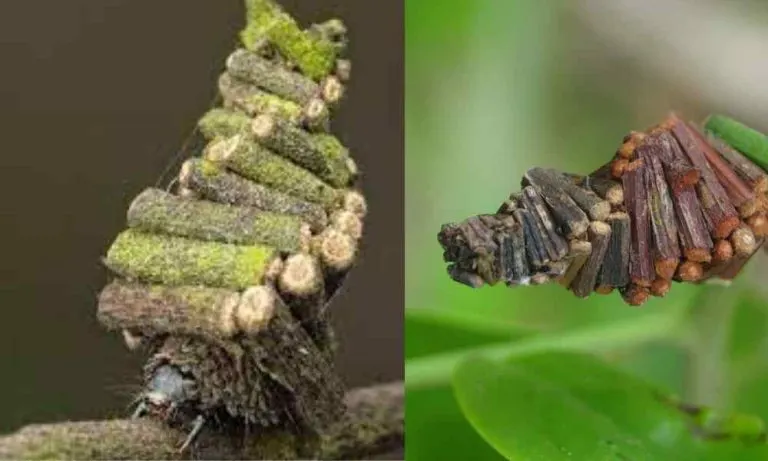The World’s Oldest Living Trees | Some As Old As The Pyramids of Egypt!
Around the world, some trees have stood through millennia as testaments to nature’s strength. These trees are not simply old, but the oldest living creatures on Earth. From the near-5,000-year-old Methuselah, in California, to Utah’s Pando colony, which has been growing since 80,000 years ago, these trees have seen thousands of storms, droughts, and even human intervention. The survival of the world’s oldest living trees is truly miraculous.
These trees are the ones that really connect us to times long, long before modern civilization. For example, the Sarv-e Abarqu of Iran is said to be over 4,000 years old, while the Old Tjikko of Sweden has its roots nearly 10,000 years old. They stand tall against all those extreme weather conditions, changes in climate, and other aspects influenced by human activities. Let’s take a look at seven of the world’s oldest living trees and find out just why these trees are so magnificent.
1. Methuselah (California, USA)
Methuselah is a Great Basin bristlecone pine believed to be 4,856 years old. The tree grows in the White Mountains of California, having survived harsh conditions such as drought and extreme cold. Scientists counted the rings of Methuselah to estimate the age of the tree. The rings of trees carry very important information about the climate within which the tree lived. These rings hold chronicles of the world’s oldest living trees and their environments. Methuselah carries with it a glimpse of a world that has hardly existed in the past 5,000 years. The U.S. Forest Service keeps it secret to protect it from injury. And although a few people get to see in-person Methuselah, its legacy still seems to keep on inspiring people everywhere.
2. Sarv-e Abarqu (Iran)
The Sarv-e Abarqu, also known as “Cypress of Abarkuh,” is one of the oldest trees in Iran, estimated between 4,000 and 4,500 years old. This ancient tree has braved the arid climate of Iran, with extreme heat and scanty rainfalls. As it stands, for most people it is a national treasure for reasons of age and historical value. Indeed, Sarv-e Abarqu symbolizes survival through situations of adversity. It is one of the world’s oldest living trees and remains a symbol of resilience. Locals also connect this tree with the myths of ancient Persian legends, which is another reason for its importance. Indeed, due to its remarkable history and resistance, Sarv-e Abarqu still receives guests from all over the world.
3. Llangernyw Yew (Wales, UK)
The Llangernyw Yew is a yew tree found in the graveyard of St. Digain’s Church in Wales. The age is estimated to be about 4,000 years, and many of the opinions are that it was planted during the Bronze Age. It has a special relevance in Welsh culture and history. For this reason, it is one of the world’s oldest living trees, embodying endurance and a link to ancient times. Due to its age, locals often associate the tree with immortality. In 2002, the Llangernyw Yew was declared one of the 50 Great British Trees due to its huge cultural and historical significance. Today, it stands as a living link with the past of Wales and continues to be part of local legends.
4. Alerce Milenario (Chile)
The Alerce Milenario, also called “Gran Abuelo,” is located in the Alerce Costero National Park, Chile. It is one of the most ancient trees in the world, estimated to be 5,400 years old. Scientists studied the rings of the Alerce Milenario and came out with evidence that it has lived through major environmental changes. This huge tree grows in the most remote part of Chile and attracts visitors interested in its great size and age. Being one of the world’s oldest living trees in South America, Alerce Milenario stands as a symbol of resilience and survival. Researchers continue studying its rings to get more knowledge about climate change over thousands of years.
5. Jōmon Sugi (Japan)
The Jōmon Sugi is a cryptomeria tree on Yakushima Island, Japan, with age estimates between 2,000 to 3,000 years. It is the largest and one of the oldest surviving trees of this species on the island and forms part of the UNESCO World Heritage List. Its name refers to the Jōmon era of ancient Japanese history that lasted from 14,000 to 300 BCE. This tree’s connection with Japan’s past is thus very deep-rooted, making it one of Japan’s contributions to the world’s oldest living trees. Many people come to visit this tree every year despite its location being so far apart just to see the size and age of this tree. For the visitors, Jōmon Sugi is a living history that keeps on flourishing despite the passage of centuries.
6. Old Tjikko (Sweden)
It was a Norway spruce growing in Sweden’s Fulufjället Mountain. The roots of Old Tjikko were 9,550 years old. Only the visible tree might be around some hundreds of years, but its root system has developed almost for 10,000 years. This is how Old Tjikko can survive through fluctuating climates and changes in the environment by growing a new trunk from the same root system. It is an extraordinary example among the world’s oldest living trees. It gained its age through the work of carbon dating, and it became the oldest known single-stemmed clonal tree. Nowadays, it is among the most ancient living organisms on Earth, and still is of great interest to scientists and tourists visiting this region.
7. Pando (Utah, USA)
Pando, aka the “Trembling Giant,” is a clonal colony of quaking aspens in Utah’s Fishlake National Forest. While it looks like a forest, Pando is actually a single organism that can boast being one large animal with an extensive and shared root system. It is estimated to be roughly 80,000 years old, according to science, making it the oldest living organism on Earth. Pando ranks high among the world’s oldest living trees. With every tree above ground in the colony living for only about 100 to 150 years, the roots continue to create new stems, thus the survival of the whole colony. Covering an area of more than 100 acres and estimated to weigh about 6,600 tons, Pando makes the ranking among the largest organisms in the world. Coming from far and wide, this is a unique ancient wonder located in the Fishlake National Forest of Utah.
Conclusion
These trees are incredible survivors and have watched over the rise and fall of civilizations. From Methuselah to Pando, they have seen environmental changes, extreme weather conditions, and human impact. They keep standing tall to this day as beacons of resiliency, reminders of nature’s strength and endurance. More importantly, these trees, the world’s oldest living trees, have been giving a peek into the history of our planet, enabling scientists to understand how life has adapted through thousands of years. As we study and protect these ancient giants, we gain a deeper appreciation for the natural world and the importance of preserving it for future generations.
Also read,
























